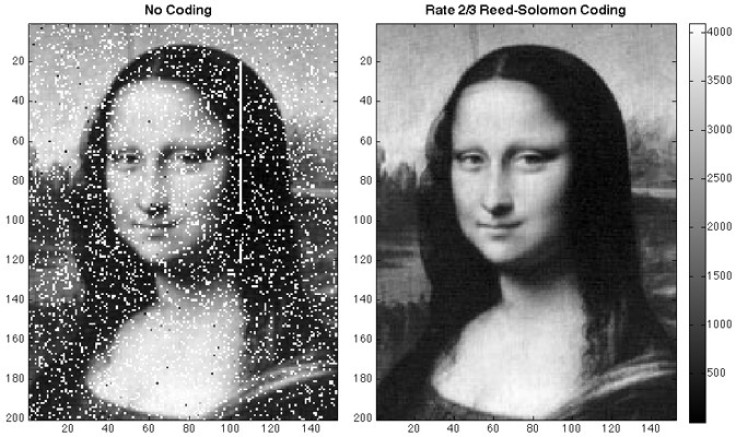Nasa Beams Mona Lisa to Moon [VIDEO]

The Mona Lisa has been beamed into space with an image of the painting sent 240,000 miles to the moon.
Nasa transmitted the picture to the Lunar Reconnaissance Orbiter (LRO) from the Goddard Space Flight Centre in Greenbelt, Maryland. This is the first demonstration of laser communication between Earth and a spacecraft.
Normally, satellites that go beyond Earth's orbit use radio waves for communication and tracking. However, the LRO is set up so it is also tracked by laser.
The Mona Lisa was sent in digital form by 'piggybacking' the image on laser pulses that are regularly sent to the Lunar Orbiter Laser Altimeter (LOLA).
By doing this Nasa were able to achieve simultaneous laser communication and tracking. David Smith, LOLA principal investigator, said: "This is the first time anyone has achieved one-way laser communication at planetary distances.
"In the near future, this type of simple laser communication might serve as a backup for the radio communication that satellites use. In the more distant future, it may allow communication at higher data rates than present radio links can provide."
Xiaoli Sun, a LOLA scientist at NASA Goddard, added: "Because LRO is already set up to receive laser signals through the LOLA instrument, we had a unique opportunity to demonstrate one-way laser communication with a distant satellite."
Timing was essential for the image to be transmitted and the Mona Lisa was divided into an array of 152 pixels by 200. Each pixel was converted into a shade of grey and represented by a number between zero and 4,069.
Each pixel was then sent via laser pulse, with the pulse being fired in one of the possible time slots during a time window allotted to laser tracking. The Mona Lisa was sent at around 300 bits per second.
The image was then reconstructed based on the arrival times of the laser pulses. Its successful transmission was verified when the image was returned to earth through the spacecraft's radio system.
Errors in photo transmission were then corrected using the same type of error-correction code used on CDs and DVDs.
Richard Vondrak, deputy project scientist on LRO, said: "This path-finding achievement sets the stage for the Lunar Laser Communications Demonstration, a high data rate laser-communication demonstration that will be a central feature of NASA's next moon mission, the Lunar Atmosphere and Dust Environment Explorer."
© Copyright IBTimes 2024. All rights reserved.






